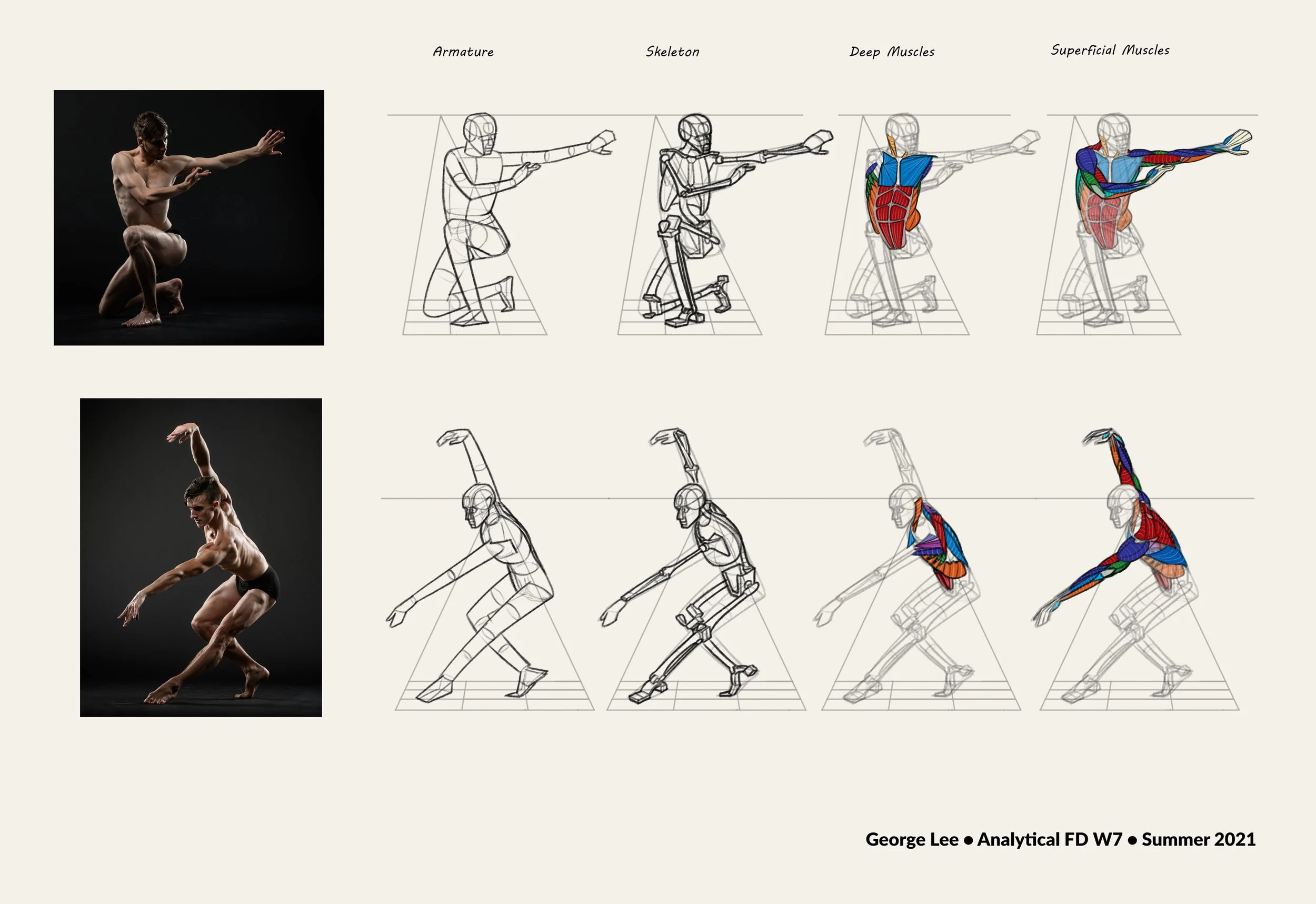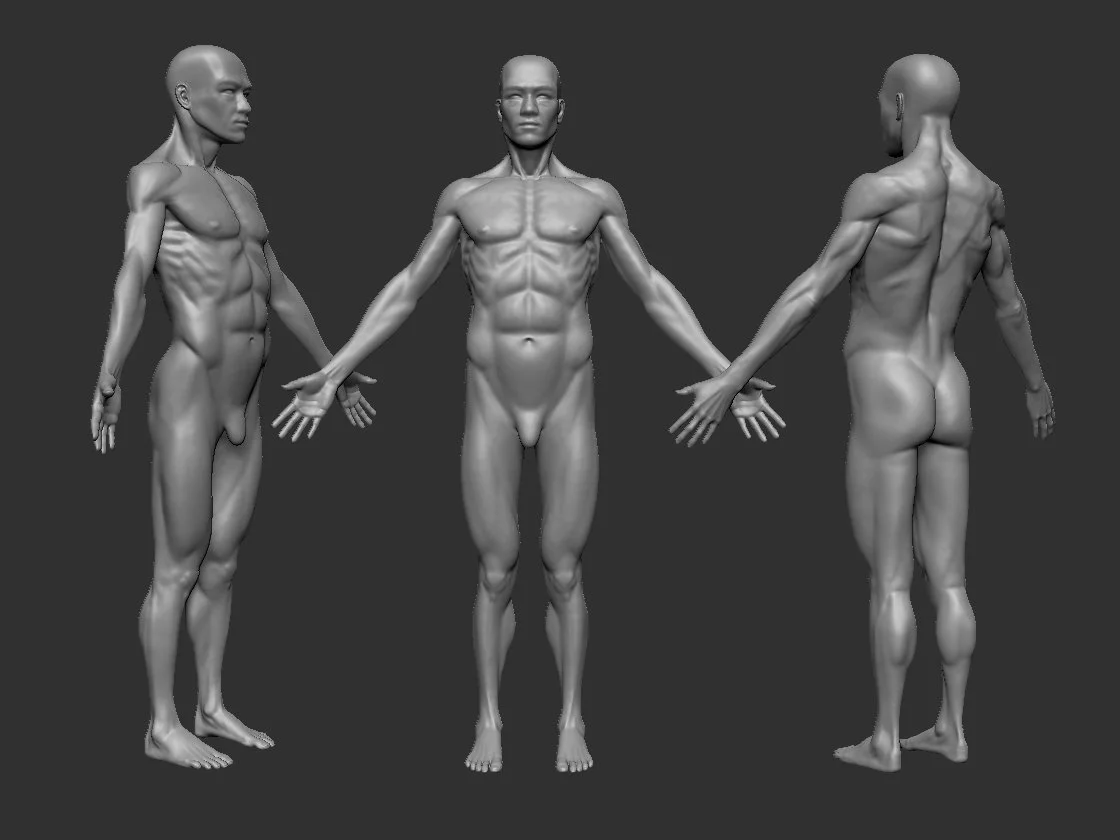I took two anatomy courses over the summer: Analytical Figure Drawing with Ron Lemen and Production Anatomy with Michael Falzon. It was a lot of work, but I think I benefitted from studying anatomy in 2D and 3D.
Analytical Figure Drawing was intense. Over 8 weeks, Ron laid out a structural shorthand approach to the human form. Each week we submitted 25 armature drawings and 5 detailed anatomical analyses. Despite the heavy workload, we barely scraped the surface of artistic anatomy and Ron made it clear that if we wanted to achieve competence it would take years of study.
Beyond the anatomy, Ron’s honest and supportive feedback pointed out gaps in my understanding of perspective. Although I know the rules of linear perspective, I had difficulty orienting limbs in space. To address this I’ll need to make a commitment to practicing the fundamentals.
Production Anatomy was less intense. Most of the class was devoted to one sculpt, starting from a simple block out and adding a new body part each week. Christian Bull’s lectures were packed with content, teaching anatomy by making reference to diagrams, live models, master artworks, and sculpting demos.
A theme emerged in Michael’s weekly review of my homework: my sculpts often lacked volume and contrast of forms (a common beginner mistake). I think the way for me to tackle this is: 1) tons of mileage, 2) consciously striving to exaggerate the forms, 3) to reconceptualize the human form in terms of primitive volumes, and 4) to create real world sculpts. 1, 2 and 3 are strategies that should also help with drawing, and I plan to do some clay sculpting in the near future.
In the last week of the course, we were challenged to do a speed sculpt from memory. It was a great exercise that revealed the limits of my knowledge. I think this was my biggest takeaway from the course: find ways to shine a light on your ignorance. Run towards your difficulties. Fail fast, fail better.

